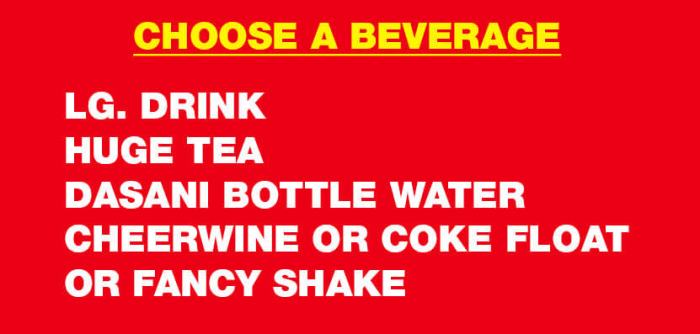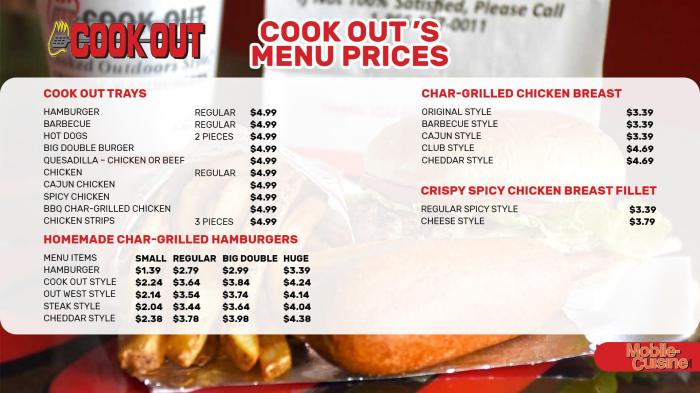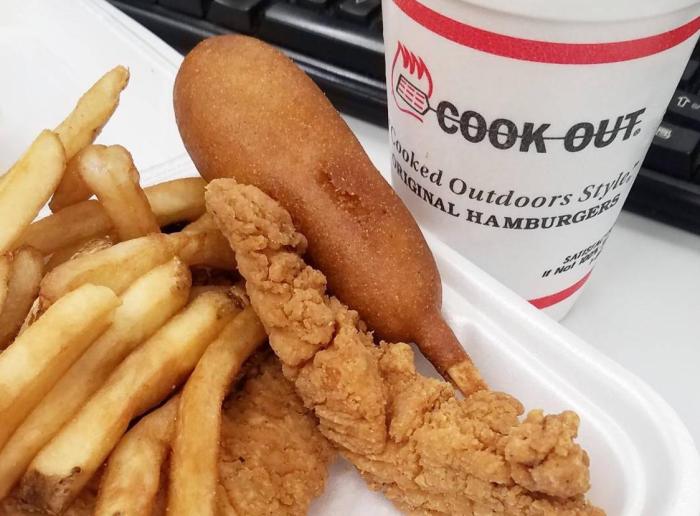How much are cookout trays? It’s a question that every grilling enthusiast has asked at some point. Whether you’re a seasoned pro or just starting out, choosing the right cookout trays can make all the difference in your grilling experience.
In this comprehensive guide, we’ll delve into the world of cookout trays, exploring the different materials, types, sizes, and costs. We’ll also provide tips for choosing the perfect trays for your needs and discuss eco-friendly options.
Materials Used in Cookout Trays

Cookout trays come in a variety of materials, each with its own advantages and disadvantages. The most common materials are aluminum, stainless steel, and disposable paper.
Aluminum
- Advantages: Lightweight, durable, and inexpensive.
- Disadvantages: Can react with acidic foods, leading to discoloration and a metallic taste.
Stainless Steel
- Advantages: Durable, non-reactive, and easy to clean.
- Disadvantages: More expensive than aluminum and can be heavy.
Disposable Paper, How much are cookout trays
- Advantages: Convenient, disposable, and biodegradable.
- Disadvantages: Not as durable as aluminum or stainless steel and can easily tear.
Types of Cookout Trays
Cookout trays come in a variety of sizes and shapes to accommodate different needs and preferences. The most common types include:
Full-Size Trays
Full-size trays are the largest type of cookout tray, measuring approximately 18 inches by 13 inches. They are ideal for serving large groups or for preparing large quantities of food. Full-size trays can be used for a variety of foods, including meats, vegetables, and side dishes.
Half-Size Trays
Half-size trays are smaller than full-size trays, measuring approximately 9 inches by 13 inches. They are a good option for serving smaller groups or for preparing smaller quantities of food. Half-size trays can be used for a variety of foods, including appetizers, side dishes, and desserts.
Compartment Trays
Compartment trays are designed with multiple compartments, allowing you to serve different foods in one tray. This type of tray is ideal for serving a variety of appetizers, side dishes, or desserts. Compartment trays come in a variety of sizes and shapes, so you can choose the one that best fits your needs.
Sizes and Capacities

Cookout trays come in a variety of sizes to accommodate different serving needs. The most common sizes are small, medium, and large. The size of the tray will determine how many servings it can hold.
The following table provides a breakdown of the standard sizes and capacities of cookout trays:
| Size | Capacity | Number of Servings |
|---|---|---|
| Small | 12 x 18 inches | 10-12 |
| Medium | 18 x 24 inches | 15-20 |
| Large | 24 x 36 inches | 25-30 |
When choosing a cookout tray size, it is important to consider the number of guests you will be serving and the type of food you will be serving. If you are serving a large crowd or a variety of dishes, you will need a larger tray.
If you are serving a small group or a simple meal, a smaller tray will suffice.
Cost Factors

The cost of cookout trays is determined by a combination of factors, including the material used, the size of the tray, and the quantity ordered.
Material costs can vary significantly depending on the type of material used. For example, aluminum trays are typically more expensive than plastic trays. Size also plays a role in pricing, with larger trays costing more than smaller trays. Finally, the quantity ordered can also affect the price, with larger orders typically receiving a discount.
Cookout trays can vary in price, but you can typically expect to pay between $5 and $20 for a pack of 10. If you’re looking for a more durable option, you can purchase a machine costing $257 500 that can produce high-quality trays in bulk.
However, for most home cooks, a simple pack of cookout trays will suffice.
Material
The material used to make the tray is a major factor in determining its cost. Aluminum trays are more expensive than plastic trays, but they are also more durable and can withstand higher temperatures. Plastic trays are less expensive, but they are not as durable and can melt if exposed to high heat.
Size
The size of the tray is another important factor in determining its cost. Larger trays are more expensive than smaller trays. This is because larger trays require more material and labor to produce.
Quantity
The quantity of trays ordered can also affect the price. Larger orders typically receive a discount. This is because the manufacturer can save money on shipping and handling costs when they ship a larger order.
Wholesale and Retail Pricing
Understanding the difference between wholesale and retail pricing is crucial for making informed decisions about purchasing cookout trays. Wholesale pricing refers to the price at which manufacturers or distributors sell products to businesses that resell them, while retail pricing is the price at which businesses sell products to individual consumers.
Wholesale pricing is typically lower than retail pricing due to several factors. Firstly, wholesalers purchase products in bulk, which allows them to negotiate lower prices with manufacturers. Secondly, wholesalers often have lower overhead costs than retailers, such as smaller storefronts and fewer employees.
These savings are passed on to businesses that purchase from wholesalers.
Benefits of Buying in Bulk
- Lower unit costs:Buying cookout trays in bulk can significantly reduce the cost per tray compared to purchasing them individually at retail stores.
- Convenience:Purchasing a large quantity of trays at once can save time and effort compared to making multiple trips to the store.
- Assured availability:Buying in bulk ensures that businesses have a sufficient supply of trays on hand, especially during peak season or for large events.
- Simplified inventory management:Bulk purchases reduce the frequency of reordering and streamline inventory management processes.
Popular Brands and Models

When choosing cookout trays, consider the popular brands and models available in the market. Each brand offers unique features, quality, and price ranges to meet diverse needs and preferences.
Weber
- Weber Q 1400 Electric Grill: Compact and portable, ideal for small gatherings, with a non-stick grilling surface and temperature control.
- Weber Spirit II E-210 Gas Grill: Mid-sized gas grill with two burners, porcelain-enameled cast-iron grates, and a built-in thermometer.
Char-Broil
- Char-Broil Performance 300 3-Burner Gas Grill: Budget-friendly option with three burners, porcelain-coated grates, and a side burner.
- Char-Broil Professional 4-Burner Gas Grill: High-end grill with four burners, stainless steel grates, and an infrared side burner.
Traeger
- Traeger Pro Series 22 Pellet Grill: Electric pellet grill with a large cooking area, digital temperature control, and Wi-Fi connectivity.
- Traeger Ironwood 885 Pellet Grill: Premium pellet grill with an even larger cooking area, Super Smoke mode, and WiFIRE technology.
Eco-Friendly Options

Eco-friendly cookout trays offer a sustainable alternative to traditional disposable trays. Made from biodegradable materials like bamboo, sugarcane, or recycled paper, these trays minimize environmental impact. They decompose naturally, reducing waste and promoting a greener lifestyle.
Benefits of Eco-Friendly Cookout Trays
-
-*Biodegradability
Breaks down naturally, minimizing waste and reducing environmental footprint.
-*Renewable Resources
Derived from sustainable sources like bamboo and sugarcane, ensuring resource conservation.
-*Non-Toxic
Made without harmful chemicals, ensuring food safety and environmental well-being.
-*Compostable
Can be disposed of in composting facilities, further reducing waste and enriching soil.
Tips for Choosing Cookout Trays

When selecting cookout trays, consider your needs and preferences. Size, material, durability, and cost are key factors.
Size
Determine the size of trays you need based on the amount of food you plan to serve. Trays come in various sizes, from small to large, to accommodate different capacities.
Material
Choose the material of your trays based on your cooking style and durability preferences. Aluminum trays are lightweight and disposable, while stainless steel trays are more durable and reusable.
Durability
Consider the durability of the trays if you plan to use them multiple times. Stainless steel trays are more durable than aluminum trays, but they may cost more.
Cost
Set a budget before selecting trays. Aluminum trays are generally less expensive than stainless steel trays. Consider the number of trays you need and the frequency of use to determine the best value for your money.
FAQ: How Much Are Cookout Trays
How much do cookout trays cost?
The cost of cookout trays varies depending on the material, size, and quantity. Disposable aluminum trays can cost as little as $0.25 each, while durable stainless steel trays can range from $10 to $50 each.
What are the different types of cookout trays?
There are several types of cookout trays available, including full-size trays, half-size trays, and compartment trays. Full-size trays are typically used for grilling large quantities of food, while half-size trays are ideal for smaller portions. Compartment trays have separate compartments for different types of food.
What size cookout trays should I get?
The size of cookout trays you need depends on the amount of food you’re grilling. For a small gathering, half-size trays may be sufficient. For larger gatherings, full-size trays or multiple half-size trays may be necessary.